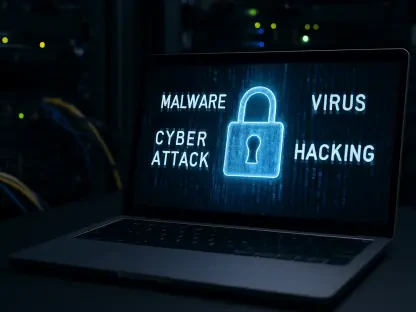In a groundbreaking study, academic researchers from the Florida Institute for Cybersecurity and North Carolina State University have unveiled critical vulnerabilities in both open source and commercial LTE and 5G implementations which could lead to significant disruptions in cellular networks. These vulnerabilities present a dire risk, potentially causing persistent denial-of-service (DoS) conditions that could disconnect entire cities from their cellular connectivity.
Findings from LTE and 5G Implementations
Extent of Security Flaws
The researchers meticulously examined seven different LTE implementations, including Open5GS, Magma, OpenAirInterface, Athonet, SD-Core, NextEPC, and srsRAN. Moreover, they evaluated three 5G implementations: Open5GS, Magma, and OpenAirInterface. Throughout their study, they uncovered 119 distinct security flaws, out of which 93 acquired CVE identifiers. This extensive examination revealed significant weaknesses within these configurations, emphasizing the susceptibility of cellular networks to exploitation.
The exploitation of these vulnerabilities can be achieved by sending malformed packets specifically designed to crash the network’s Mobility Management Entity (MME) or Access and Mobility Management Function (AMF). These crashes can result in continuous service disruptions until they are resolved by network operators. This devastating outcome highlights the severity of these security issues and the critical need for effective countermeasures to safeguard against such disruptions.
Threat Beyond Radio Distance
One alarming aspect of these vulnerabilities is that some can be exploited without a SIM card, which expands the threat landscape considerably. In particular, with the rise of Wi-Fi Calling services, the potential for exploitation extends beyond the traditional radio distance. This shift in threat potential necessitates a reevaluation of current security measures in place, highlighting the need for comprehensive protection strategies that consider these emerging avenues for potential attacks.
Additionally, the study points out that security breaches may occur through compromised base stations or by gaining access to the IPsec network that these stations use for communication. The accessibility of 5G base stations, which are often situated in more accessible locations, further elevates the associated risks. This component of the findings accentuates the necessity for stringent security protocols governing the physical deployment and technological safeguarding of cellular communication infrastructure.
Disclosure and Methodology
Responsible Disclosure Efforts
Attention to ethical considerations was a hallmark of this research, as the researchers made concerted efforts to responsibly disclose their findings to the maintainers of the affected cellular cores. Most maintainers received and acknowledged these findings; however, it is noteworthy that NextEPC and SD-Core did not respond despite multiple disclosure attempts. This highlights a critical area of concern regarding the collaboration and responsiveness essential for addressing such significant vulnerabilities in a timely manner.
The methodology and findings of this comprehensive research are detailed in the academic paper “RANsacked,” which delves into the fuzzing framework employed by the researchers. The document provides in-depth insights into the techniques used for discovering these security defects, offering valuable information for further research and development in the arena of telecommunications security.
Future Security Measures
The overarching results from the study underscore an urgent need for enhanced security measures within LTE and 5G networks to prevent large-scale disruptions. This research brings to light the importance of addressing these identified vulnerabilities and the necessity for network operators to implement robust, proactive security protocols. Ensuring the security of cellular networks will require a multifaceted approach, involving continual monitoring, timely updates, and collaboration between different stakeholders in the network ecosystem.
Implementing these measures is critical for maintaining the integrity and reliability of cellular connectivity, which forms the backbone of modern communication infrastructure. The proactive identification and resolution of vulnerabilities will play a pivotal role in safeguarding against potential exploitation, ensuring that the threats posed to connectivity and service are adequately mitigated.
Addressing the Need for Proactive Defense
Collaborative Efforts for Enhanced Security
To effectively combat the risks identified in the study, collaborative efforts among network operators, security experts, and stakeholders are imperative. Such collaboration can enable the development and implementation of comprehensive security strategies that address both current and emerging threats. This approach involves not only immediate response measures but also the establishment of a culture of continuous improvement and vigilance within the telecommunications industry.
Moreover, investments in research and development focused on advanced security solutions should be a priority. Developing innovative technologies and methodologies for detecting and mitigating threats can provide a robust defense mechanism against potential exploits. This forward-looking approach ensures that as the telecommunications landscape evolves, the security frameworks in place evolve in tandem, maintaining a resilient and secure network infrastructure.
Ensuring Resilient Network Infrastructure
In addition to the immediate steps necessary for addressing the discovered vulnerabilities, the research points towards the broader need for ensuring the resilience of network infrastructure. This involves regular assessments and updates to security protocols, informed by the latest threats and developments in the field. By maintaining a proactive stance on security, network operators can preempt potential issues, minimizing the risk of large-scale disruptions and maximizing the integrity of cellular services.
The critical takeaway from this extensive research is the recognition of the importance of security in the rapidly advancing field of telecommunications. As LTE and 5G networks underpin a vast array of services and applications, ensuring their security is paramount. Addressing vulnerabilities proactively and collaboratively will be essential in safeguarding the future of cellular connectivity, ensuring consistent, reliable services for users.
Ultimate Implications for Cellular Networks
In a groundbreaking study, academic researchers from the Florida Institute for Cybersecurity and North Carolina State University have unveiled critical vulnerabilities in both open source and commercial LTE and 5G implementations which could lead to significant disruptions in cellular networks. These vulnerabilities present a dire risk, potentially causing persistent denial-of-service (DoS) conditions that could disconnect entire cities from their cellular connectivity.
The study underscores the importance of strengthening security measures within modern telecommunication systems. Given that LTE and 5G are foundational to current and future connectivity, ensuring their robustness is crucial for maintaining seamless and secure communication. The researchers are advocating for urgent attention from both developers and regulatory bodies to address these issues before they can be exploited maliciously. By doing so, they aim to bolster the safety and reliability of our increasingly digital world.









